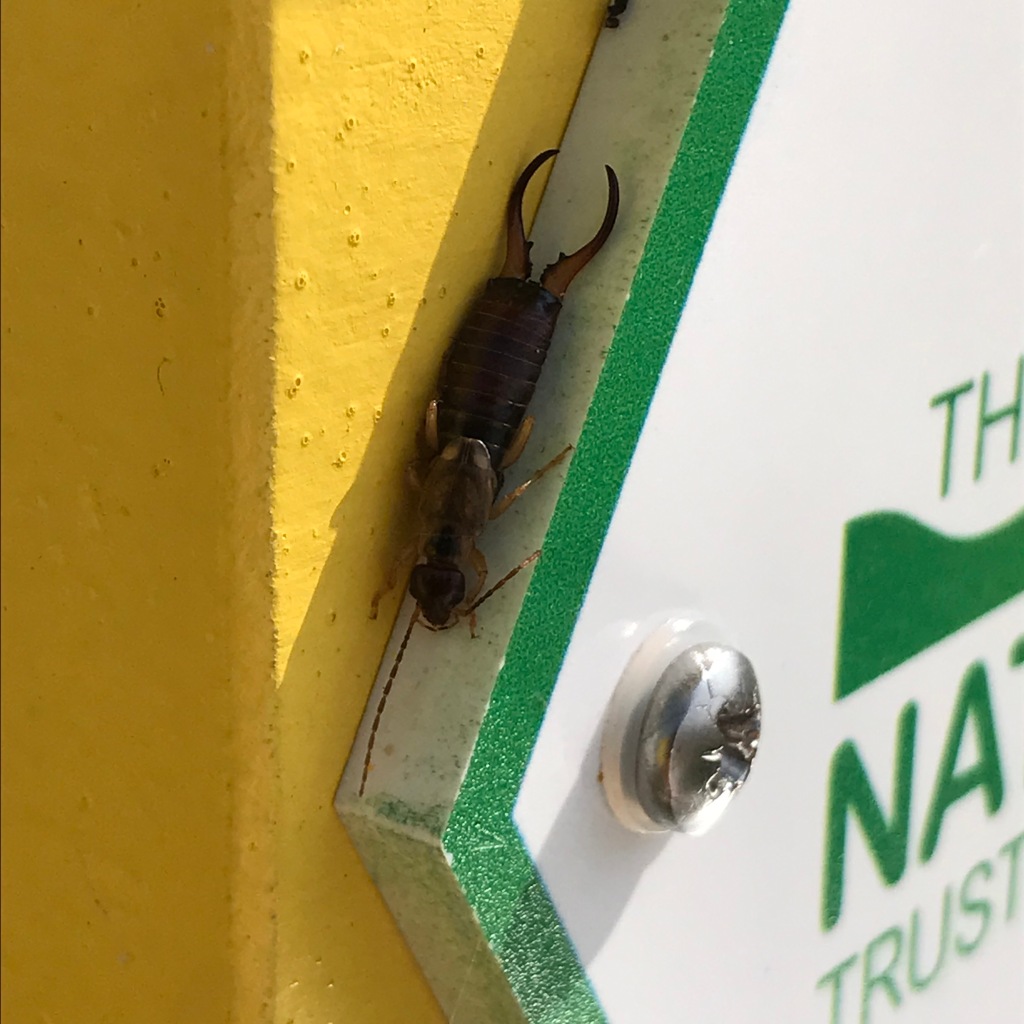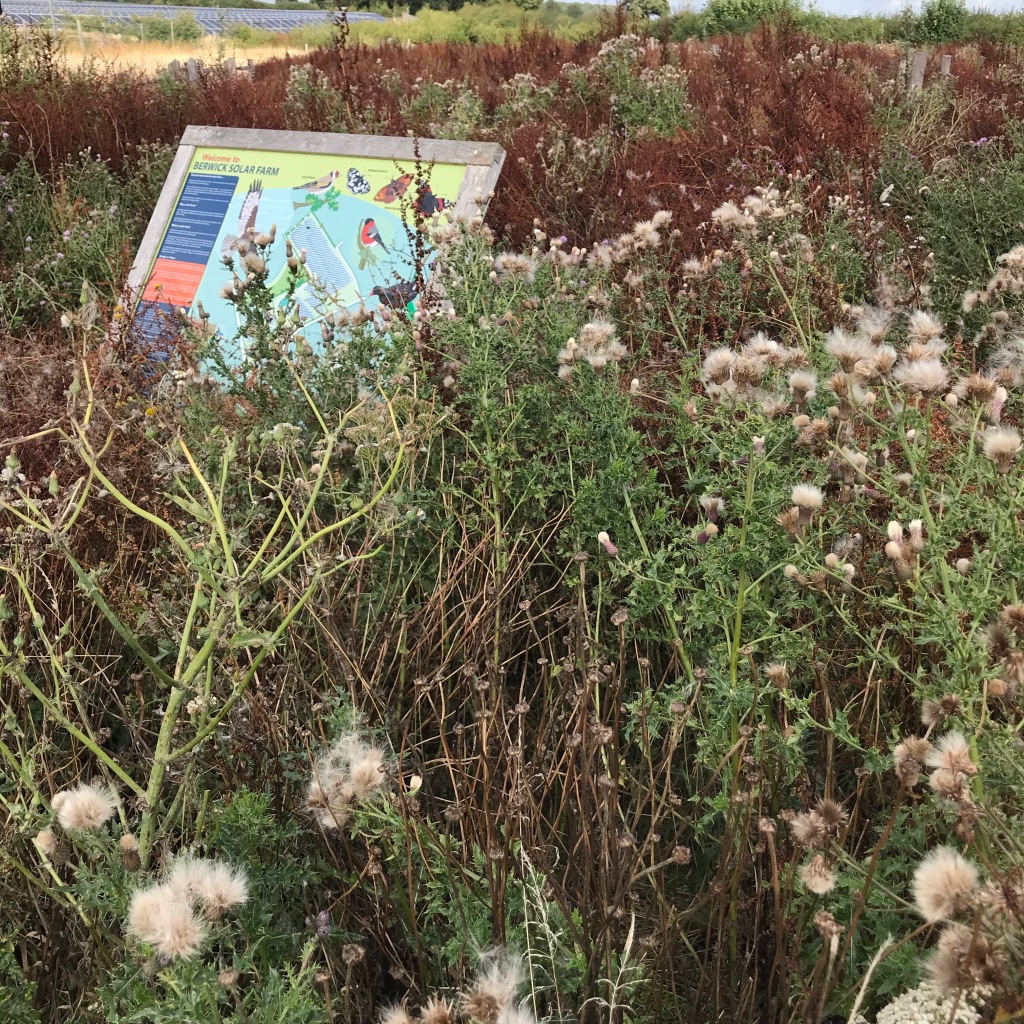
The Thermosolar hive’s greatest attribute is its state-of-the-art Varroa control procedure, using the power of sunlight to gently heat the hive to a temperature for a short time, which doesn’t harm the bees, but does kill the mites. I wanted to know if the bees do have a mite load, so I put the inspection board in as it will soon be time to treat them. Autumn and spring treatments are most effective as it prevents a challenge for the bees during the winter, and keeps them mite-free as they build up before summer.
The inspection tray sits under the mesh floor of the hive so any mites (and other hive detritus) can drop on to it and be checked. It’s yellow as that’s the best colour to spot the dark brown mites, but it perfectly matches the Solar Bee Project colourway! The tray is also a good way to assess activity in the hive without disturbing the bees.
The bees are flying well, and have not done anything in the super but they were much happier so maybe they’ve appreciated the extra space. I will remove the top box before winter so that they can focus on maintaining the temperature in the brood box. I closed the top entrance to prevent wasps coming in, and there are a few earwigs enjoying the shelter and warmth of the wood; a beehive attracts all sort of wildlife, making it a great focal point for this site.
I watched the foragers returning for a few minutes to check all was well. They are still bringing in pollen but today seemed to be a nectar day!
The abundant forage is starting to wane now, and the Michaelmas daisies have largely gone over in the Community area, but I saw goldfinches and pipits enjoying the numerous fluffy seedheads of the thistles and knapweed. I had a wander round to see what was there. It’s so important to remember that honeybees are a large and hungry organism, and providing extra food for them has the knock-on effect of providing both food and habitat for others. I saw rabbit holes, a grass snake, Speckled Wood butterflies, tiny worker bumblebees who are the remainder of this year’s colonies, as well as flies and of course, honeybees. The bramble fruit will soon ripen, feeding mice, voles and birds…and passing walkers!






















Great work Jen and fantastic that you saw so much wildlife especially the grass snake and the finches and pipits feeding on the thistles
Thanks Alister…it’s so beautiful down there.
So you actually control the heat in the hive for a brief period of time to treat for mites? That’s really brilliant. I must learn more about this, thanks! I really like your updates.
Yes. There is a special panel we put in place of the roof, which heats up the brood briefly – a bit like us having a sauna! It kills the mites on the adult bees and in the cells but as it’s just a short period of time the bees are fine. I’m looking forward to doing the treatment and will of course report back 🙂
Thanks for explaining that. I look forward to your report. I wish I could see it in person.
My pleasure 🙂
So flipping good. You’re educating me and I don’t even feel it. Beautiful images, too 🙂
Awww, thank you!! That makes me VERY happy 🙂
I thought you were a treatment free beekeeper.
I am. And I don’t/wouldn’t treat any of my bees. However, (a) these are not my bees 😉 and (b) if people ARE going to treat for varroa, I do feel it is better to use a method which is non-chemical, non-invasive, and doesn’t harm the bees or the hive ecology. So, I am interested to see how this method works 🙂